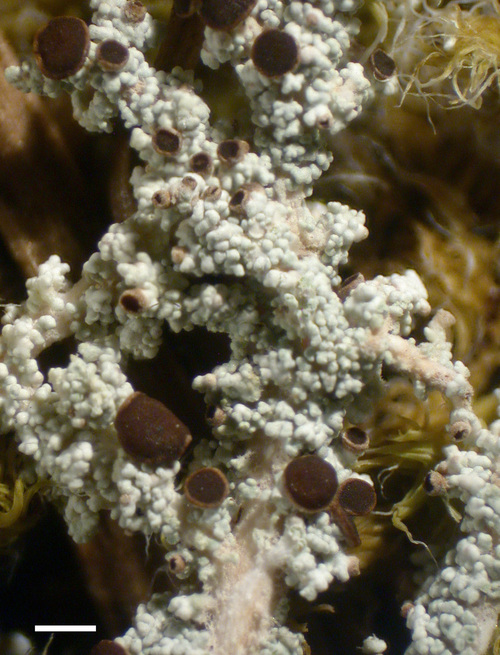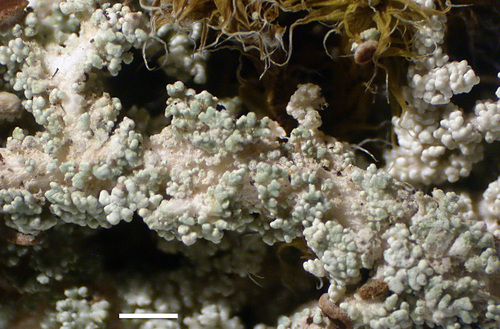Click on Characteristic name for explanation. Click on image for larger version.
|
Stereocaulon tomentosoides
| Overview
| | PNW Range: | | | West side | Occasional
| | East side | Occasional
| | Immediate coast | Uncommon
| | Alpine or subalpine | Uncommon
| | Habitat: | Cool rocky areas in the mountains, especially talus slopes, outcrop areas, and lava flows.
| | Substrate: | On rock or humus or soil over rock or in moss mats.
| | Comments: | Previously considered the P- chemotype of S. tomentosum or S. sasakii var. tomentosoides.
| | Synonymy: | Stereocaulon sasakii var. tomentosoides, S. sasakii, S. tomentosum P- chemotype
|
|

Cephalodia
by B. McCune
2/7

Apothecia
by B. McCune
5/7

Phyllocladia
by B. McCune
7/7
Scale: Bar=1mm unless noted
|
|
|
|
|